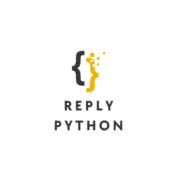 In the ever-evolving landscape of programming languages, Python has emerged as a powerhouse, consistently ranking high in the IEEE Spectrum’s list of top programming languages. Its versatility, readability, and extensive libraries have made it a favorite among developers worldwide. Python’s user-friendly syntax and robust capabilities make it an ideal choice for a wide range of applications, from web development to data analysis and artificial intelligence.
In the ever-evolving landscape of programming languages, Python has emerged as a powerhouse, consistently ranking high in the IEEE Spectrum’s list of top programming languages. Its versatility, readability, and extensive libraries have made it a favorite among developers worldwide. Python’s user-friendly syntax and robust capabilities make it an ideal choice for a wide range of applications, from web development to data analysis and artificial intelligence.
As technology continues to advance, the demand for Python developers shows no signs of slowing down. Its adaptability to various domains and seamless integration with other languages have cemented Python’s position as a must-have skill in the programming world. Whether you’re a seasoned coder or just starting your programming journey, exploring Python’s capabilities can open doors to endless possibilities in the fast-paced realm of software development.
IEEE Specctrum Top Programming Languages Python
Python has consistently maintained its top position in the IEEE Spectrum programming language rankings due to several key factors.
Factors Influencing Python’s Dominance
Python’s dominance in the IEEE Spectrum ranking can be attributed to its versatility, readability, and the extensive libraries it offers. Its user-friendly syntax and robust capabilities make it a preferred choice for developers across various domains.
Comparing Python With Other Top Languages
When compared to other top programming languages, Python stands out for its ease of use, readability, and adaptability to diverse applications. Its growing demand in the industry further solidifies its position as a valuable skill for developers at all levels.
Key Features of Python Highlighted by IEEE Spectrum
Python’s Versatility Across Different Industries
Python’s adaptability across various industries is a key feature highlighted by IEEE Spectrum. This dynamic programming language is utilized in fields such as web development, data analysis, artificial intelligence, and more. Its versatility allows developers to address diverse industry needs efficiently.
Python’s Role in Emerging Technologies
The significance of Python in emerging technologies is underscored by IEEE Spectrum. Python plays a crucial role in cutting-edge technologies such as machine learning, data science, automation, and artificial intelligence. Its robust capabilities and user-friendly syntax make it a preferred choice for incorporating innovation into tech advancements.
Practical Applications of Python in Industry
Python’s adaptability extends to various industries, driving innovation and enhancing productivity across diverse sectors. Its versatility makes it a valuable tool for developing real-world projects and fostering creativity in technological advancements.
Real-World Python Projects
Python’s flexibility and ease of use have led to a myriad of real-world applications across industries. From creating web applications to automating workflows and analyzing data, Python is extensively utilized in diverse sectors such as finance, healthcare, education, and more. For example, in finance, Python is used for financial modeling, algorithmic trading, and risk management, while in healthcare, it plays a crucial role in medical imaging analysis, predictive analytics, and health monitoring systems. The simplicity and efficiency of Python empower developers to implement solutions rapidly, making it a preferred choice for a wide range of projects.
Python’s Impact on Productivity and Innovation
Python’s impact on productivity and innovation is significant, driving advancements in various industries. Its rich libraries, versatile frameworks, and integration capabilities enable developers  to streamline processes, enhance efficiency, and create innovative solutions. By leveraging Python, companies can expedite project timelines, reduce development costs, and foster a culture of innovation. The language’s scalability and robustness contribute to improved productivity and accelerated innovation cycles, making it a cornerstone of technological progress in the industry.
to streamline processes, enhance efficiency, and create innovative solutions. By leveraging Python, companies can expedite project timelines, reduce development costs, and foster a culture of innovation. The language’s scalability and robustness contribute to improved productivity and accelerated innovation cycles, making it a cornerstone of technological progress in the industry.
Python’s dominance in the programming realm is undeniable, driven by its adaptability and robust ecosystem of libraries. Its pivotal role in cutting-edge technologies like machine learning and data science propels innovation across industries. As highlighted by IEEE Spectrum, Python’s influence on the programming landscape is profound and enduring. The language’s future appears promising, with projections indicating sustained growth and relevance. Despite potential challenges in scalability and performance, Python’s trajectory remains upward, fueled by demand for skilled developers and integration into evolving tech landscapes. Embracing a balance between advancement and stability will be key for Python to navigate obstacles and maintain its status as a premier programming language.

